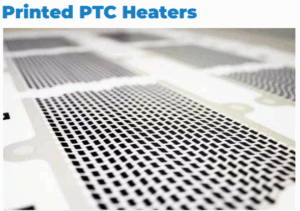PTC Heaters – Printed Positive Temperature
Coefficient Heating Technology
Printed PTC heaters (Positive Temperature Coefficient heaters) are an advanced class of self-regulating heating elements designed for electronics, automotive, medical, industrial, and consumer applications. Unlike fixed resistance heaters, PTC heaters automatically stabilize their temperature, offering exceptional safety, long lifespan, and energy efficiency.
ICAPE Group, through its French subsidiary CIPEM IHM, designs and manufactures printed PTC heaters using proprietary processes. With a dedicated factory in France and worldwide engineering support, ICAPE delivers customizable, high-quality PTC heating solutions that meet the most demanding industry standards.
What is a Printed PTC Heater?
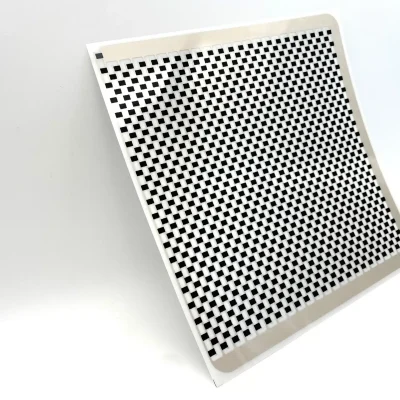
A printed PTC heater is a thin-film heating solution manufactured using conductive inks on substrates such as polyester, Kapton, glass, or metal. Unlike traditional heaters that require thermostats, PTC heaters use PTC inks containing wax micro-particles:
- At low temperatures, resistance is low → fast heating.
- As the wax particles expand with rising temperature, they separate carbon particles → resistance increases.
- The heater then reaches a self-regulated equilibrium point, avoiding overheating.
Available temperature ranges:
- PTC 60°C → stabilizes between 55–60°C
- PTC 90°C → stabilizes between 85–90°C (available 2026)
- PTC 110°C → stabilizes between 105–110°C (available 2026)
- Future development: PTC 40°C inks for low-temperature heating applications
This makes PTC heaters ideal for precision, reliability, and safety in modern electronics.
Types of PTC Heaters
PTC heaters are available in multiple designs, depending on application needs:
PTC Ceramic Heating Elements
core heating chips used in many devices
PTC Air Heaters
direct heating for enclosures or appliances
PTC Fan Heaters
combine PTC elements with fans to circulate warm air
PTC Surface-Mount Heaters (SMD)
compact modules for PCBs and electronics
PTC Plate & Tubular Heaters
durable designs for industrial and automotive use
Each type can be customized by voltage (12V, 24V, 48V, 110V, 230V), temperature, and form factor.
Advantages of Printed PTC Heaters
Compared to classical fixed resistance heaters, printed PTC heaters deliver clear advantages:







Design & Construction of Printed PTC Heaters
A typical printed PTC heater consists of:
Silver busbars
ensure reliable current flow
Silver conductive tracks
distribute current evenly
Carbon PTC cell
the active heating zone with self-regulating properties
These heaters are designed according to AFNOR SPEC 2212 standards and aligned with the 2023 flexible PCB norms, ensuring compatibility with high-reliability electronic assemblies.
Applications of Printed PTC Heaters
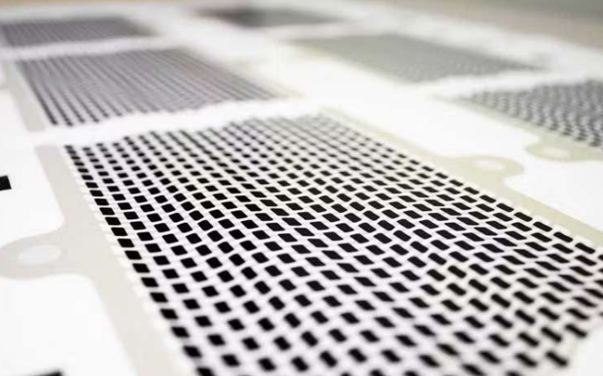
Thanks to their thin, lightweight, and customizable design, printed PTC heaters are used in a wide variety of industries:
- Automotive – EV battery heating, seat warmers, mirror defogging
- Medical & Healthcare – patient monitoring equipment, portable medical devices
- Industrial – enclosure heating, condensation prevention, sensors
- Consumer Electronics – wearables, smartphones, household appliances
- Marine & Aerospace – equipment protection in harsh environment
- Food & Beverage – temperature stabilization in portable devices
ICAPE Group & IHM: Expertise in PTC Heater Manufacturing
Compared to classical fixed resistance heaters, printed PTC heaters deliver clear advantages:
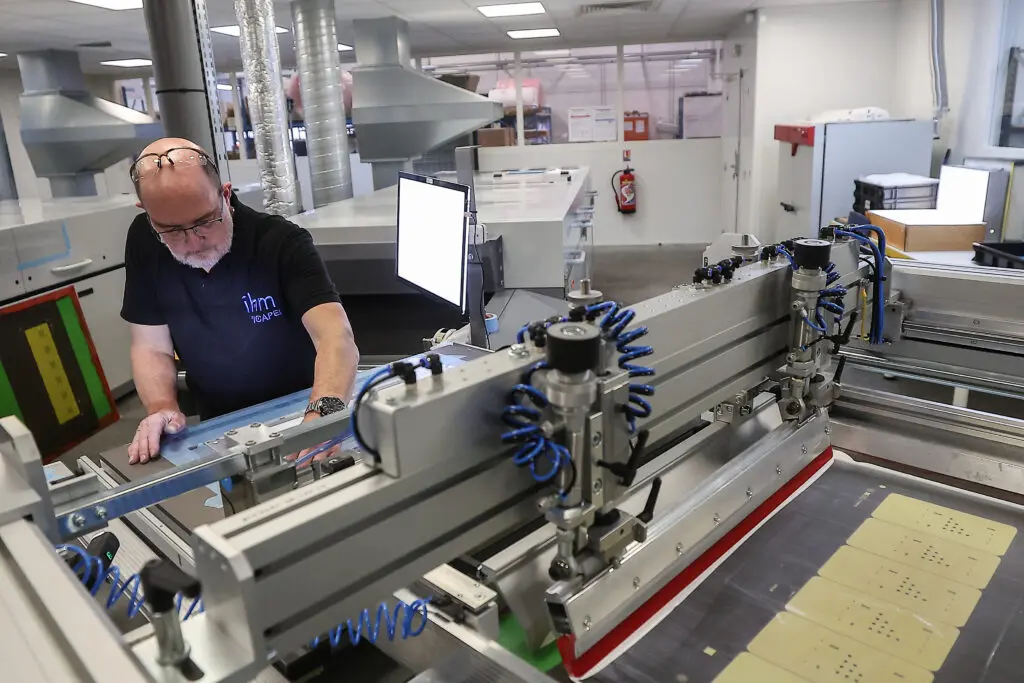
ICAPE Group owns a dedicated factory in France ( Cipem IHM) for PTC Heaters.
When it comes to PTC heaters for industrial and electronic applications, ICAPE Group stands out as a global leader. With more than 20 years of expertise in electronic components, we combine technical know-how, global supply chain reliability, and localized manufacturing power.
A key advantage is our dedicated ICAPE-owned factory in France – CIPEM IHM, manufacturing PTC heating technologies and thermal management solutions. This allows us to deliver custom-engineered PTC heaters, optimized for your specific voltage, form factor, and operating environment, while ensuring European quality standards, fast lead times, and unmatched technical support.
By choosing ICAPE Group, you benefit from a partner that guarantees innovation, reliability, and scalability for every heating application, from electronics enclosures and automotive systems to renewable energy and industrial automation.
This unique asset allows ICAPE to provide:
- Made in France quality & reliability
- Short lead times & European logistics support
- Custom engineering for size, voltage, substrate, and operating conditions
- Specialized materials (polyester, Kapton, glass, metal)
- Ongoing R&D for new PTC inks (including future 40°C variants)
With a global supply network and technical excellence in thermal management, ICAPE Group is the trusted partner for custom PTC heater solutions across industries.
| Operating Temperatures | Shapes | Sizes | Voltages | Typical Power Output | Substrate | Connector | Resistance Tolerance |
|---|---|---|---|---|---|---|---|
| 60°C (2026: 90°C & 110°C options) | Square, Rectangle, Circle | 3 standard dimensions per shape | 5V, 9V, 12V, 24V, 30V | ≈ 3W | Standard Polyester (Kapton, glass, metal on request) | Wire leads | ±10% (better than industry average ±20%) ±20% is the tolerance for some our competitors |
Applications of Printed PTC Heaters
When comparing costs, PTC heaters may have a slightly higher upfront price than traditional resistive or film heaters, mainly due to the advanced materials and manufacturing process. However, their self-regulating technology eliminates the need for external thermostats, sensors, or complex control circuits, which reduces overall system costs. In addition, PTC heaters consume less energy once they reach their equilibrium temperature, leading to long-term energy savings. Their extended lifetime and low maintenance requirements also lower total cost of ownership. For projects requiring safety, durability, and efficiency, PTC heaters often prove to be the most cost-effective choice over the product’s lifecycle.
Why Choose Printed PTC Heaters over Classical Heaters?
| Feature | Printed PTC Heater | Classical Heater |
|---|---|---|
| Temperature Regulation | ✔ Self-regulating | ✖ Requires thermostat |
| Integration | Integration Direct PCB integration | Needs driver & sensor |
| Energy Efficiency | High, self-adjusting | Lower, constant draw |
| Safety | Built-in protection | External protection required |
| Customization | Shapes, voltages, substrates | Limited |
| Resistance Tolerance | ±10% | ±20% industry average (tolerance for some our competitors, not for classical heaters) |
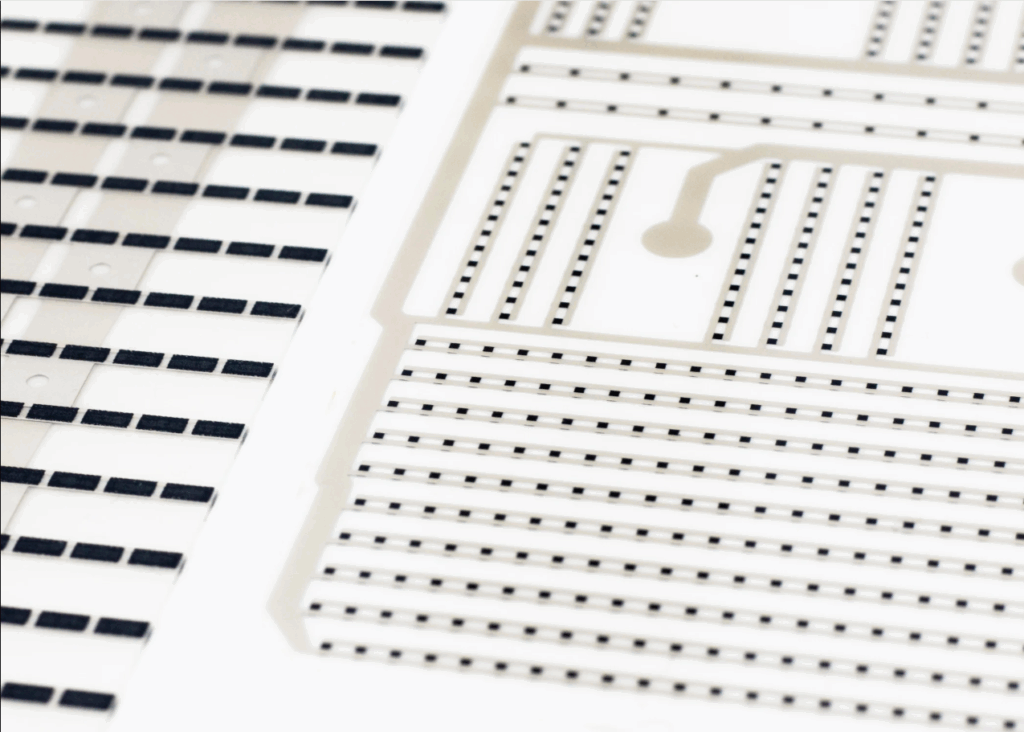
How to Select the Right PTC Heater
When designing with PTC heaters, engineers should evaluate:
- Operating Voltage – 12V (electronics), 24–48V (EVs, industrial), 110–230V (mains).
- Temperature– determines the temperature (typically 60 ; 90 or 110°C).
- Power Output – difference between initial power (startup) and stabilized power (operation).
- Form Factor – chip, plate, fan, tubular, or PCB-mount.
- Environment – airflow, humidity, condensation risks.
- Safety Requirements – correct fuse sizing and standards compliance (UL, CE).
Future of PTC Heating Technology
PTC Heaters Development – New Temperature Ranges Coming Soon
At ICAPE Group’s IHM factory, innovation in printed PTC heating technology continues to expand. Starting January 1st, 2026, two new PTC heater temperature options will be available: 90°C and 110°C, complementing the current 60°C range. Each version will be offered in three standard shapes (rectangle, square, circle), with three sizes per shape, ensuring maximum flexibility for design integration.
Voltage options include 5V, 9V, 12V, 24V, and 30V, with a typical power output of around 3W, making these heaters suitable for electronics, automotive, and industrial applications. In parallel, our ink manufacturer is developing an innovative 40°C PTC ink, designed for low-temperature applications such as wearables, medical devices, and sensitive electronics. These upcoming developments reinforce ICAPE Group’s commitment to delivering customizable, future-ready PTC heating solutions tailored to industry needs.
- Smarter PTC modules with integrated sensors for IoT and Industry 4.0.
- Advanced designs for wearables and medical devices.
- High-performance EV battery heating for faster charging in cold climates.
- Sustainability focus: PTC heaters contribute to energy savings and reduced CO₂ emissions.
Conclusion
Printed PTC heaters represent the future of safe, efficient, and customizable heating technology. By using advanced conductive inks and self-regulating PTC materials, they eliminate overheating risks while ensuring long service life and adaptability.
With ICAPE Group and IHM in France, customers benefit from European manufacturing, strict quality control, and tailored designs, ensuring the right solution for every application, from automotive and medical devices to industrial and consumer electronics.
If you’re looking for a reliable partner in printed PTC heating solutions, ICAPE Group provides the expertise, innovation, and global support your projects need.
Want to read more?
Download our brochure and see if our PTC Heater solutions are right for you!
PTC heaters are used in electronics, EVs, HVAC, renewable energy, and consumer devices to provide safe, efficient, self-regulating heat.
Yes. PTC heaters consume more power at startup, but once stabilized, they use only the power needed to maintain temperature, reducing total energy consumption.
Most PTC heaters operate reliably for over 100,000 hours, depending on the environment.
Yes. They are often used for condensation prevention in enclosures, telecom systems, and automation cabinets.
Traditional heaters need external thermostats to prevent overheating. PTC heaters self-regulate automatically, making them safer and more reliable.
Yes. Because of inrush current, time-delay (slow-blow) fuses are recommended.
PTC heaters are designed to be maintenance-free. Since they have no moving parts and rely on self-regulating printed PTC technology, they do not require calibration, replacement sensors, or frequent servicing. Once integrated into a system, a PTC heater will typically run for tens of thousands of hours without intervention, reducing downtime and total operating costs compared to traditional heating solutions.
Do You Need PTC Heaters?
Any questions?
There is an ICAPE Group team close to you and your business. All around the world, our business units are staffed with native experts available to answer all your questions. Contact us today!

